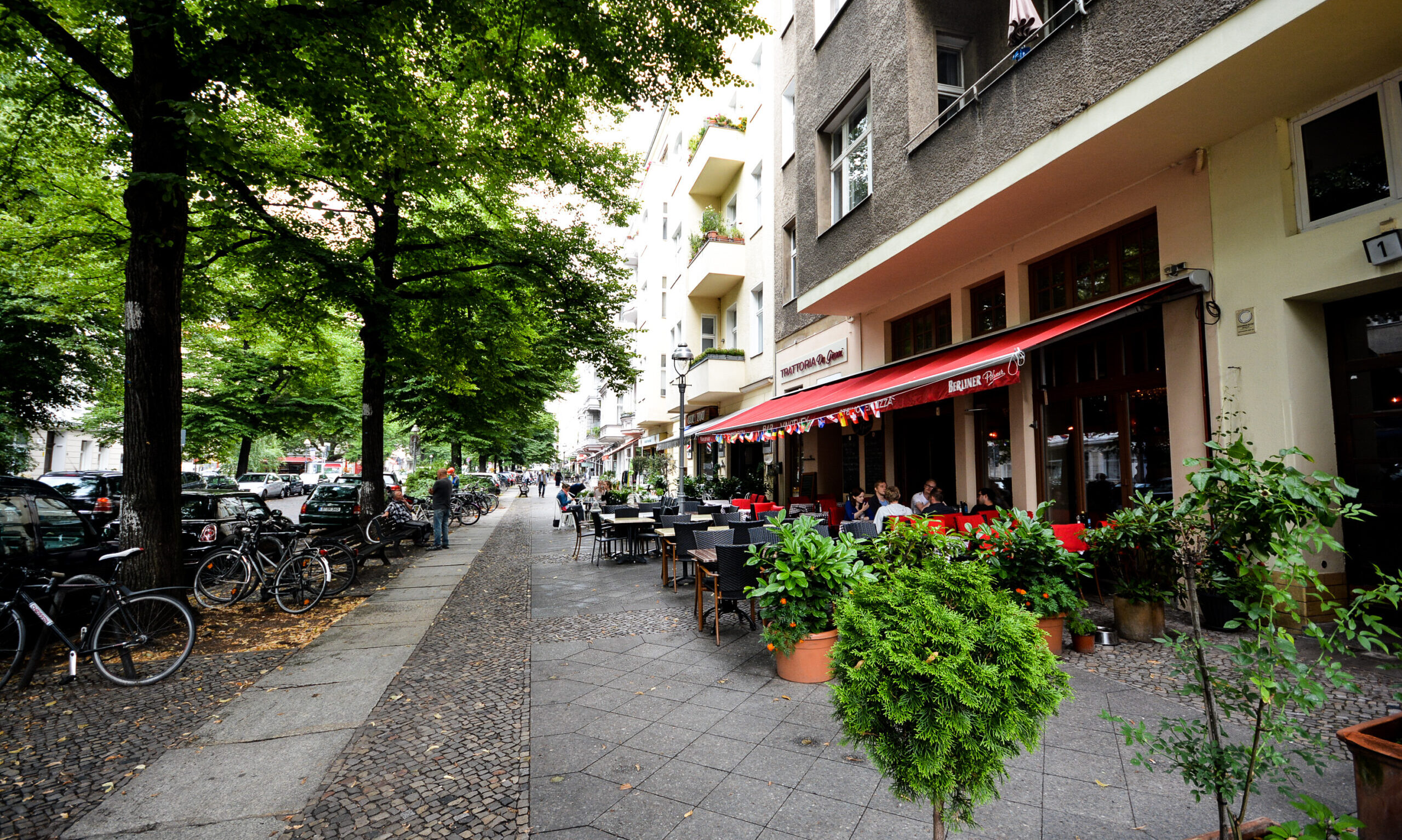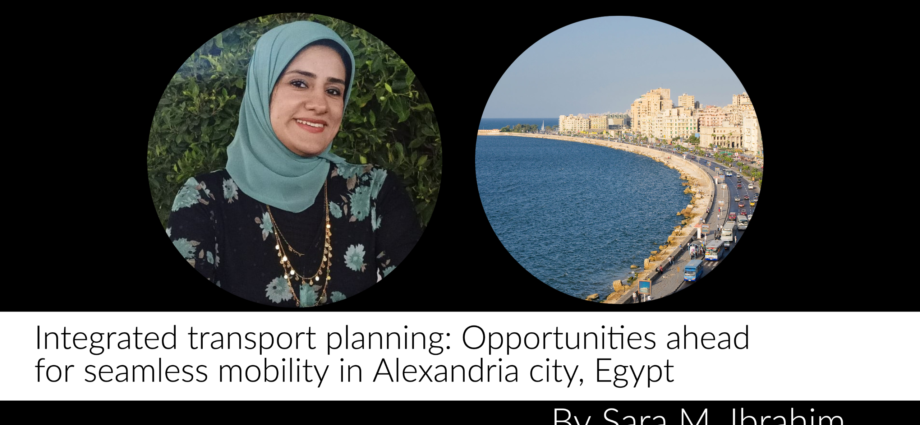By: Sara Mohamed Sabry Zakaria Ibrahim
Sara is an Assistant lecturer at the Faculty of Engineering, Department of Architecture, Delta University for Science and Technology, Gamesa city, Egypt and Ph.D. candidate at Faculty of Engineering, Department of Architecture, Alexandria University, Alexandria city, Egypt.
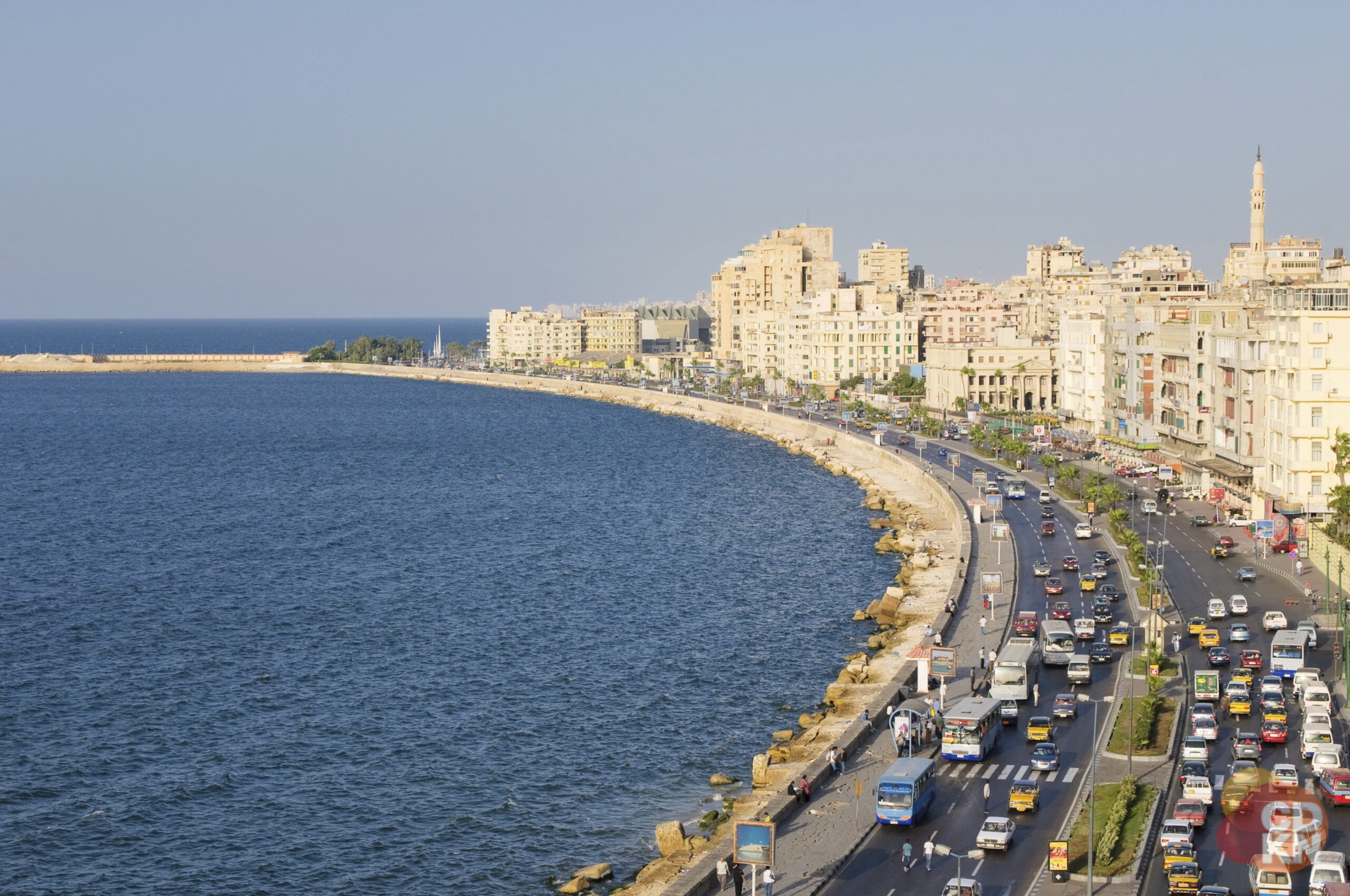
Photo Source: Climate & Development Knowledge Network
“Alexandria is witnessing great developments in the transport sector that tend to encourage the use of public transportation, limit the use of private cars, and facilitate sustainable urban mobility through the city. However, the necessary infrastructure, policy, and regulatory frameworks for non-motorized transport have not been yet developed. There is a need to leverage the existing opportunities arising from the new public transportation projects in the city.”
Sara M. Ibrahim
The observed mobility impediments
Alexandria city, with a population of around 5,431,379 (CAPMAS, 2021) is located on the north- western edge of the Nile Delta. The city development is restricted to a narrow coastal stretch between the Mediterranean sea to the north and lake Mariout to the south. Due to the linear composition of Alexandria and the increasing population pressures on the transportation networks, the city is undergoing serious traffic jams, mobility problems, and increasing travel demand. Moreover, the densely-populated urban areas are serviced with a limited number of narrow streets, insufficient parking spaces, or non-motorized transport (NMT) facilities. Under these circumstances, drastic increases in the number of cars have strained the urban road networks, resulting in congestion for most of the day (Hassan, 2008). Furthermore, there are other observed impediments including (1) the inner street networks have interruptions and places of discontinuity, (2) poor condition of pavements and road infrastructure, (3) poor connectivity of sidewalks, and (4) the public park area of private cars reduces the width of the road and blocks the pedestrian pathways. Most of these factors disproportionately affect the urban context in the city especially in terms of limited access to transport services, poor air quality and road safety concerns.
After the Covid-19 outbreak, half of the world has lived under lockdown so as to minimize the infection and loss of lives. Several cities asked their citizens to stay home and avoid many public places which turned off most of the urban living benefits. As a corollary, people have resorted to public open spaces to fulfill their recreational needs, physical activities, and keep themselves healthy at the same time. Unfortunately, the lack of public open spaces in Alexandria city made the connection between citizens and public space more problematic. Although Alexandria’s Mediterranean shores were closed to curb the COVID-19 spread, people resorted to the city corniche to fulfill their need to go outside, walk or cycle. It is important to mention that before the outbreak, physical activities through running, walking, or cycling marathons are one of the health issues that are highly observed in the city every Friday. There are also a number of cycling initiatives and advocacy groups that aims at raising awareness and advocate for using bicycles as a sustainable way of transportation such as Tabdeel, GO BIKE, Cycle Egypt, Global Biking initiative (GBI- Alexandria Team) while others promote running such as Alex runners initiative.
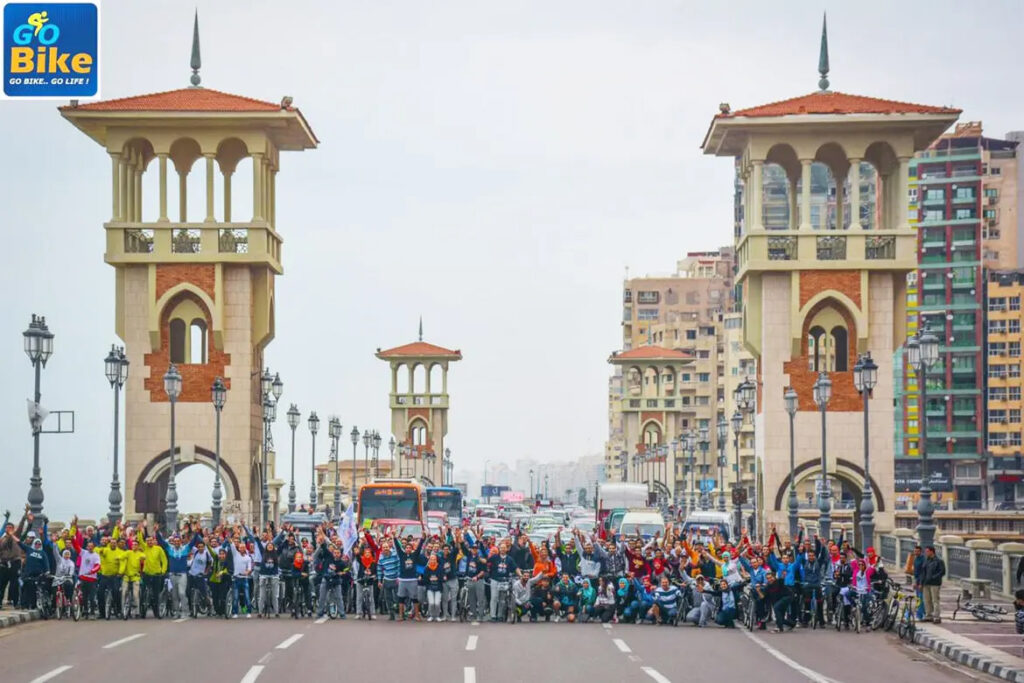
These activities managed to bring a huge number of participants together on the city corniche or claiming their right of using the public space and the street in a safe, sustainable, clean mobility (Ibrahim, 2021). From the previous, there is a need to also rethink the existence of public open spaces and the corniche development as potential solutions not only for the post-COVID-19 but also for the future of active mobility in the city of Alexandria.


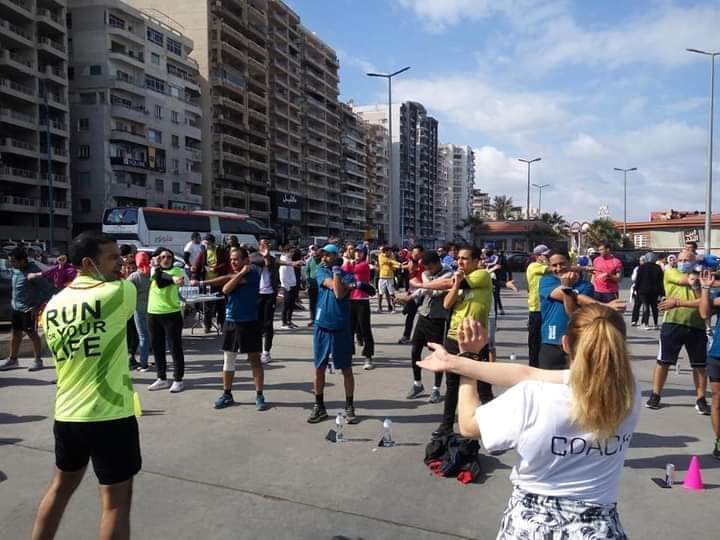
“The city already has an existing tram system that will complement the metro system in the effort to make Alexandria a traffic-free urban center.“
Sara M. Ibrahim

Figure 5: A conceptual design elaborated at ‘Tabdeel workshop’ in September 2018, aimed at giving a provision for cycle lanes on Alexandria corniche and integrating it as a sustainable means of transport. Photo credential: Tabdeel
Opportunities in the transport sector
According to the Strategic Urban Plan (SUP 2032), there are priority objectives that aim to improve the existing public transport (PT) sector and these objectives are: (1) provide public mass transit along the primary communication axes, (2) prioritize PT in terms of space (dedicated lanes and priority at crossings) or finances, to show that PT is faster and more convenient than driving, (3) connect subsystems and form a hierarchic PT system, (4) make heavy maintenance on the existing network: El-Raml tram lines and Abu Qir railway lines (Simon et al., 2015). Electric mobility is also seen as a part of the sustainable development goals that Egypt aims to achieve by 2032. In light of this, Alexandria is currently witnessing a set of national projects especially the urban rail projects and electric transformation. These projects are part of the comprehensive plan framework implemented by the Ministry of Transport (MOT) to renewing rails, electromechanical works, making all the trains of the current fleet air-conditioned and electrify PT systems.
The city is underway to start implementing two transportation projects set to transform the city mobility (1) the first is the rehabilitation and extension of the existing 13.8 km-long El-Raml tram line, (2) and the second to upgrade of an underused 22 km-long urban railway line into a high- frequency surface metro, adding metro stops and improving road safety by removing at-grade crossings. The city already has an existing tram system that will complement the metro system in the effort to make Alexandria a traffic-free urban center. The Metro will run from Alexandria city’s innermost eastern point at Abu Qir to Burg Al-Arab in the West, paralleling the Mediterranean coast, the corniche, and El-Raml tram lines. Furthermore, the upper lanes of these projects are expected to create a longitudinal and transverse movement to connect the major corridors of Alexandria city: corniche (El-Gaish) road, Al-Hurriya (Abu Qir) road, and Mahmoudiya canal axis. According to the plan drawn up by the MOT, the new metro aims to reduce traffic congestion in the coastal city streets and extends for a length of 45.5 kilometers. Upon completion, the metro network is expected to serve 10,000 to 15,000 commuters an hour (Egyptian Streets, 2019; Global Mass Transport Report, 2020) The metro project is expected to be completed in two years over three phases.
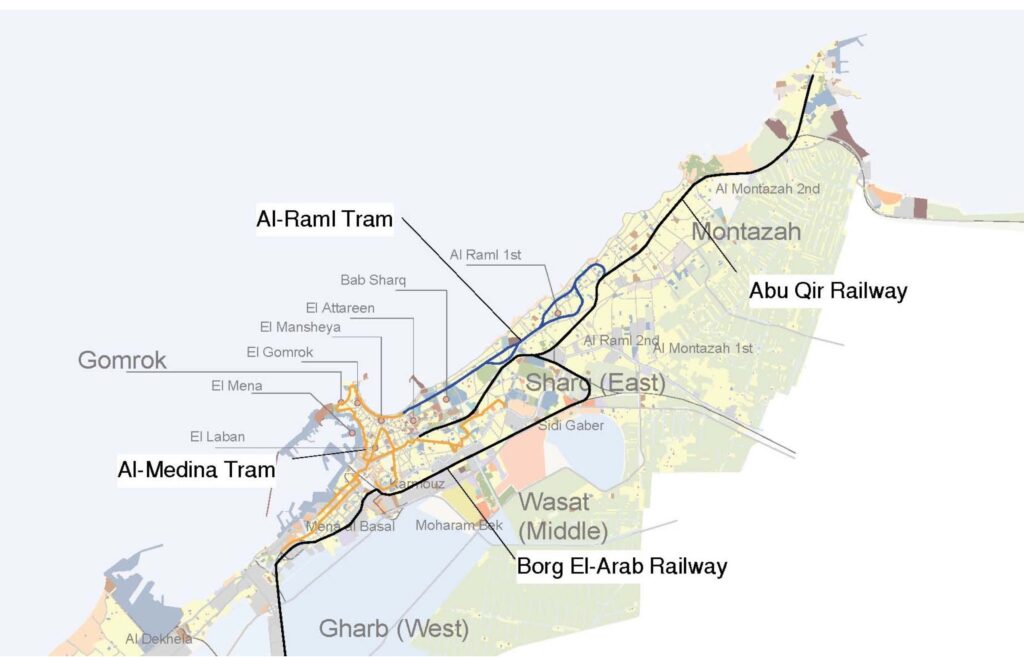
Another significant opportunity is the electric buses in Alexandria, which were operating since 2019. The Alexandria Passenger Transport Authority (APTA) owns 15 air conditioner electric buses which operate with two electric motors 300-kilowatt each, with a maximum speed of 80 kilometers per hour. The buses run on chemical energy stored in rechargeable battery packs which makes them more environment-friendly. The electric buses are also less costly in maintenance, which costs EGP 50,000 (approximately $3,000 annually) compared to EGP 200,000 (approximately $12,000) for the regular buses (AhramOnline, 2019). After the Mahmoudiya corridor development was completed in August 2020, 32 electric bus stations were distributed along the corridor, with 12 major stations and 20 frequent stops to serve the residents of four districts. It should be noted that the Mahmoudiya development project itself is an opportunity. The axis that extends more than 21 kilometers, helped in reducing Alexandria’s traffic pressure, creating new developments, curbing the spread of informal settlements, raising the awareness of pollution, and forming new industrial communities in low-density areas. The axis consists of six to eight lanes in each direction, 11 flyovers, 14 pedestrian bridges, and three tunnels. However, a number of problems still affecting traffic congestion, caused mainly by the prevalence of tok-toks (rickshaws) and street vendors.

Source: Ahram Online: Egypt rolls out country’s first electric bus in Alexandria
“After the Mahmoudiya corridor development was completed in August 2020, 32 electric bus stations were distributed along the corridor, with 12 major stations and 20 frequent stops to serve the residents of four districts. It should be noted that the Mahmoudiya development project itself is an opportunity.” The axis that extends more than 21 kilometers, helped in reducing Alexandria’s traffic pressure, creating new developments, curbing the spread of informal settlements, raising the awareness of pollution, and forming new industrial communities in low-density areas.“
SARA M. IBRAHIM
Leverage the existing opportunities through integration
Based on the aforementioned projects, Alexandria is witnessing great developments in the transport sector that tends to encourage the use of PT, limit the use of private cars, and facilitate sustainable urban mobility through the city. However, the necessary infrastructure, policy, and regulatory frameworks for the NMT have not been yet developed. There is a need to leverage the existing opportunities arising from the new PT projects in the city. Although the projects have a significant improvement for PT, they solely would not be sufficient on the long term. Promoting active mobility can be considered a complementary strategy for the success of these projects as they provide seamless linkages and safe transfers between the main corridors and the city’s other transportation network. Moreover, active mobility has the potential to solve the first- and last-mile problem in the urban context by improving access to PT and thus increasing access to services and opportunities. The resulting synergy between the mass transit and NMT can create a degree of access, flexibility, and comfort that can compete with that of private cars. Therefore, considering NMT network provisions can deliver a step-change improvement of urban mobility in the city.
Further to this, it is important to embrace NMT networks as an integral part of current urban transport plans in response to the aftermath of Covid-19 new normal. Learning from the global practices, the new normal, and the necessary social distancing measures have reshaped the urban transport geography of many cities worldwide. These cities have come up with innovative interventions to urge people to walk or cycle as a resilient way to keep people connected including: (1) installing temporary or permanent emergency cycle lanes and infrastructure, (2) protecting the right to cycle, providing bike lane provisions, and encouraging it, or (3) creating complete streets and pedestrianizing roads (Ibrahim, 2020). Considerably, making investments in NMT infrastructure will be also a viable solution to cope with the ongoing crisis of Covid-19 and future pandemics. People’s new mobility patterns and behavior that have appeared during the crisis at the Alexandria corniche need to consider its development as an essential issue and need to be connected to the subsystems. As such, updated regulations should be incorporated into the existing master plan and seeking objections or suggestions as inputs from the citizens. The connections between the PT lines and other local modes need to be well thought to allow smooth interchange for the commuters. Therefore, building several transfer points or intermodal nodes for these projects is essential and these transfer points include:
• With private cars: several ‘park and ride’ transfer points and facilities should be built to enable transfer from cars to PT modes.
• Building transfer points between (the new metro, tram systems, and electric buses) and the existing (paratransit services and shared vehicles).
It should be noted that integration is a multi-faceted concept that includes several aspects or factors and might include difficulties in delivering integrated transport. The reasons for this vary, but many of them are organizational. There are a number of steps in the transport integration which are gathered in a so-called ‘The integration ladder’ and many cities worldwide adopted it (i.e. the United Kingdom) in order to reach the integration and sustainable transport. Figure 8 illustrates the integration steps arranged ascendingly according to organizational difficulty (Preston, 2012). In this vein, Alexandria local authorities and transport decision-making entities should assess shortcomings of the existing and new projects, identify what needs to be developed, what lacks integration, or which regulations need to be included.
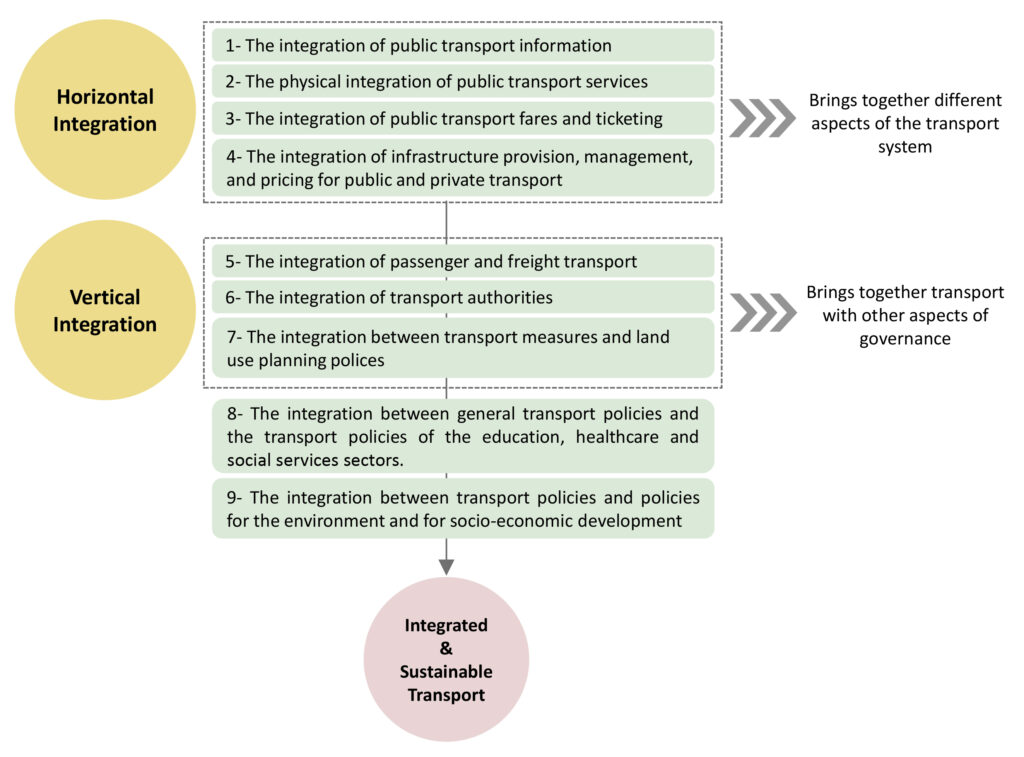
Figure 8: The integration ladder steps in approximate ascending order of organizational difficulty. Annotated by the author based on (Preston, 2012).
“Promoting active mobility can be considered a complementary strategy for the success of these projects as they provide seamless linkages and safe transfers between the main corridors and the city’s other transportation network. Moreover, active mobility has the potential to solve the first- and last-mile problem in the urban context by improving access to PT and thus increasing access to services and opportunities. The resulting synergy between the mass transit and NMT can create a degree of access, flexibility, and comfort that can compete with that of private cars.“
Sara M. Ibrahim
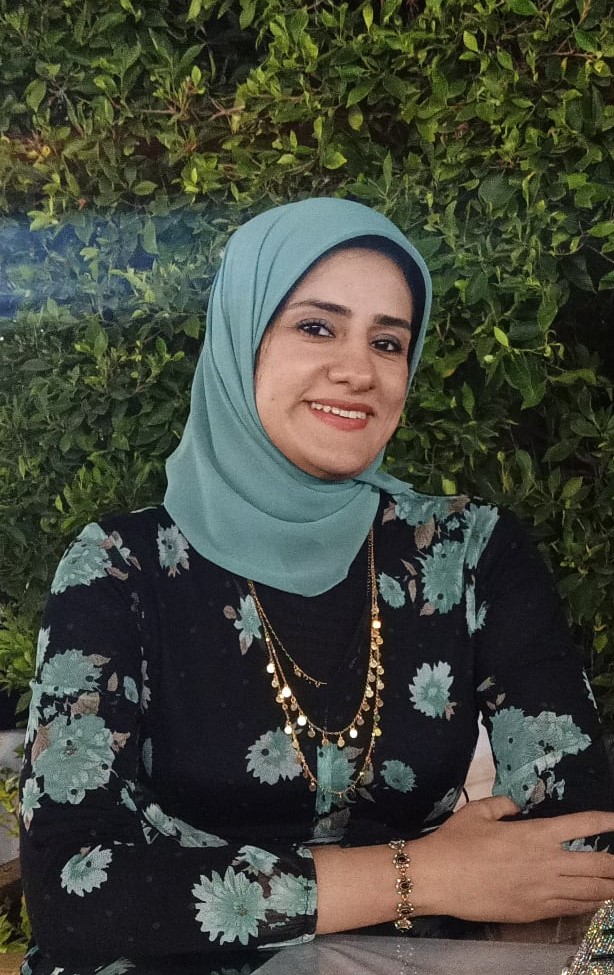
Sara M. Ibrahim is an Egyptian based Architect and urban planner specialized in transportation planning, urban development, urban Mobility and urban issues. She has completed her B.SC. Degree in (2013) as well as her M.SC. Degree in (2017) from the Architectural Engineering Department, Alexandria University. Currently, she is a Ph.D. candidate at Alexandria University with the same field of interests and at the same time, she is working as an assistant lecturer at Delta University for Science and Technology, Gamesa, Egypt.
Email: post-sara.mohamed@alexu.edu.eg
ORCiD: https://orcid.org/0000-0002-3715-7680
LinkedIn: https://www.linkedin.com/in/sara-m-ibrahim-8109b7121/
REFERENCES
References
Abdrabou, N. (2020, August). Cycling in Egypt: The Community approach, lines-hub.com
Alexandria SUP 2032 (2014). Strategic Urban Plan Alexandria 2032 -Phase one: Transportation sector Report. The General Organization for Physical Planning (GOPP)
AhramOnline. (2019, July). Egypt rolls out country’s first electric bus in Alexandria.
CAPMAS. (2021). No Title. Central Agency for Public Mobilization and Statistics (CAPMAS).
EgyptianStreets. (2019, September). Alexandria Metro Construction to Start in October
GlobalMassTransportReport. (2020). Urban Rail Projects in Egypt: Plans to develop nearly 520 km of network.
Hassan, A. A.-M. (2008). Sustainable Development of Mobility in Alexandria Metropolitan Area. Traffic and Transportation Studies, 121–130.
Ibrahim, S. M. S. Z. (2020 December). Reshaping Mobility for Future Pandemics: Is It Right to Still Embrace Transit-Oriented Development?
Ibrahim, S. M. S. Z. (2021). The Making of Creative Cities: Exploring the role of Sustainable Urban Mobility (SUM) (pp. 173–196).
Preston, J. (2012). Integration for Seamless Transport. International Transport Forum Discussion Papers, 2012–1, 1–31.
Simon, J., Dereymez, C., Sorret, E., Chanut, A., & Hemdan, D. K. (2015). Alexandria Urban Transport Study Report Phase 1.
